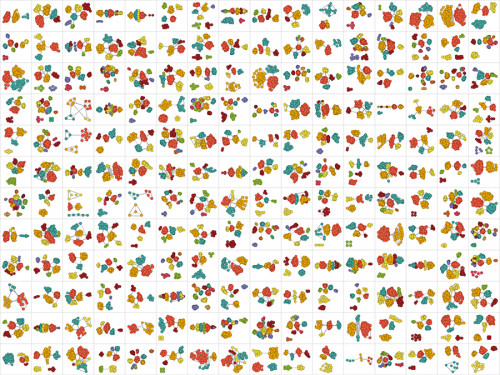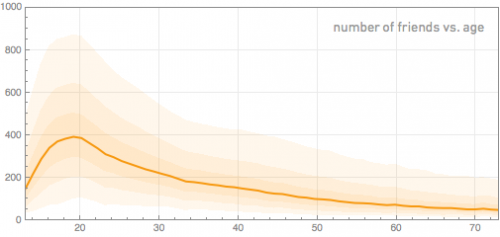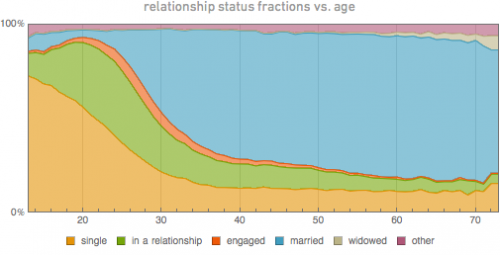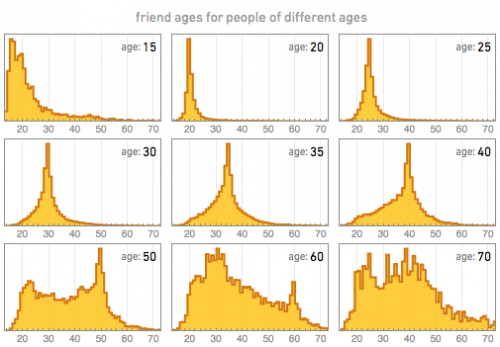Social networks of a few Data Donors—with clusters of friends given different colors. Credit: Wolfram Alpha
(Phys.org) —Stephen Wolfram, chief designer for the Mathematica software application and Wolfram Alpha answer engine has posted a blog entry detailing reports generated using the company's software as part of a project called the Data Donor program. As Wolfram notes, the reports offer some insights into how people use Facebook, their relationships with other people and their interests—all compared against others that also use Facebook, by gender, age and interests.
The Data Donor program was and is one where people are asked to allow Wolfram and his colleagues to use their Facebook data as input for Mathematica and the answer engine. To date, over a million people have volunteered. Now, Wolfram has revealed some of what he and his company have found—personal analytics in the form of charts and graphs—courtesy of Facebook.
The project has revealed some fascinating information—such as what sorts of things people are likely to post about as they grow older, which age group tends to use Facebook more, the age at which people marry and even the distribution of friends people have on the social networking site.
The project isn't perfect of course, those that agree to submit to analyses by Wolfram and his team are much more likely to be avid Facebook users, which in turn likely means they have more friends, social circles and post more often. Wolfram acknowledges this by noting that while the reports show the typical Facebook user has 342 friends, other studies have shown that the majority of Facebook users actually have few to no friends listed at all. Despite that, the reports do offer some intriguing evidence of personal preferences and trends.
One of these is a report that shows that men talk about music and movies more than do women. Another reveals societal trends, such as the number of people listing themselves as married after age 30—exploding to the extent that all other statuses appear nearly irrelevant.
The biggest area of mined data however, appears to be centered around how many friends people have, how many friends their friends have, the number of friend clusters, their size and how it all changes as people grow older (they tend to have fewer friends but more clusters). One surprise was that one report showed that most people have friends that are mostly near the same age until they reach age 50—after that, younger friends begin to grow to the point where they overshadow those of the same age, presumably because they begin to reflect children, grand-children, etc.
What's most interesting about the reports offered by Wolfram, et al, perhaps, is that so much information can be gleaned about people, both individually and as part of larger group, from a publicly available source. Such a revelation is likely to spur concern about how else such data is being used and by whom.
© 2013 Phys.org


























